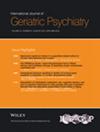Paid Employment and Mental Health in 65–74-Year-Olds: Analysis of National Data From 2000, 2007 and 2014
Abstract
Introduction
Employment rates for people aged 65 and over have been changing rapidly in many countries, but little is known about associations of employment status with mental health status and their stability over time. We therefore investigated mental health associations with employment status in 65–74-year-olds in three national samples.
Methods
The data for these analyses were drawn from three national surveys of psychiatric morbidity among adults in England living in private households carried out in 2000, 2007, and 2014. Employment status was the primary exposure of interest. Common mental disorder (CMD) and constituent symptoms were ascertained identically in the three surveys from the revised Clinical Interview Schedule. Covariates included identical demographic, social and physical health measures.
Results
A significant association between non-employment and CMD was present in 2007 (odds ratio 2.66 [95% CI: 1.02–7.83]) but there was no significant association between non-employment and CMD in 2000 or 2014. The largest attenuation in the association between non-employment and CMD was seen when adjusted for physical health related factors. In combined samples, non-employment was most strongly associated with self-reported cognitive difficulties (OR 1.25, 1.01–1.61), depressive ideas (1.30, 1.01–1.67), worry (1.30, 1.01–1.68), and anxiety (1.27, 1.00–1.64) as constituent CMD symptoms.
Conclusion
Evidence is still unclear whether employment after statutory retirement ages is associated with better mental health, and associations may be symptom-specific. In the light of policies to encourage older workers to remain active in the labour market, more research is needed into the interrelationships between paid work and mental health, as well as other outcomes.

 求助内容:
求助内容: 应助结果提醒方式:
应助结果提醒方式:


